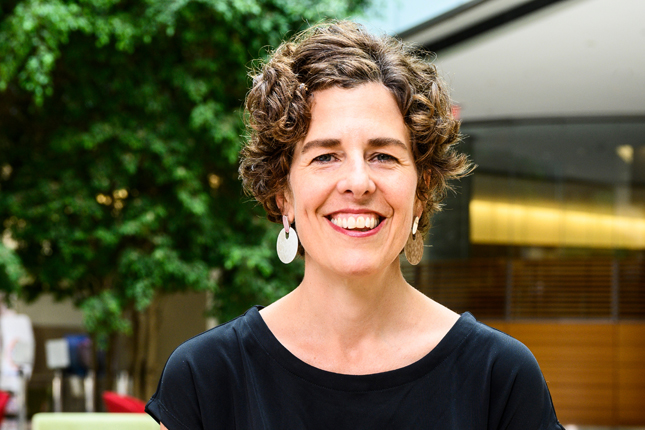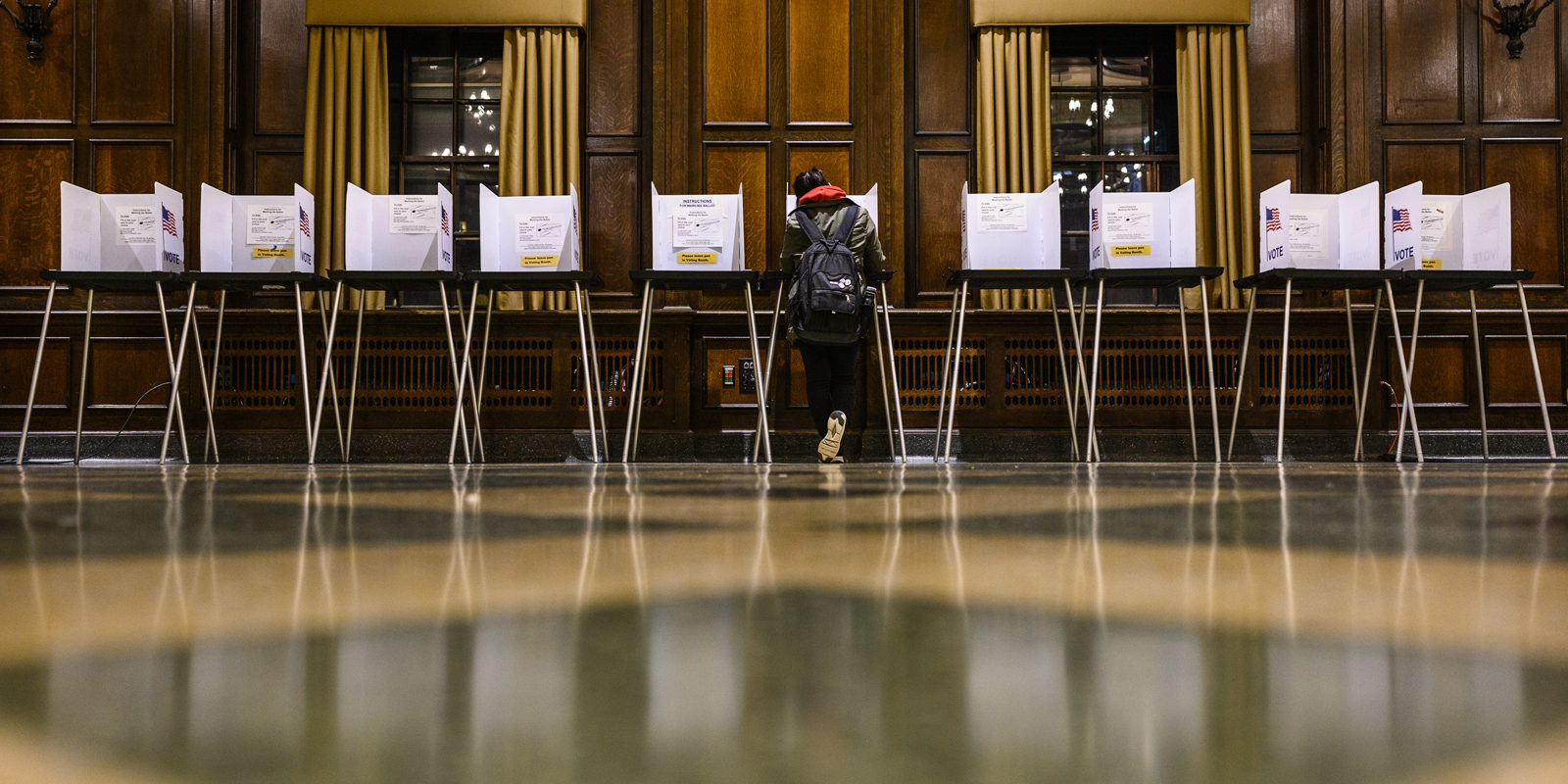In a typical year, Barry Burden estimates he’ll receive calls from reporters asking for his commentary and perspective on the political issue of the moment—the latest debate, the impending Supreme Court hearings, etc.— maybe 7-10 times a week. In a presidential election year, you can multiply that number by a factor of three—or more.

“My job with the media used to be seasonal,” says Burden, a professor of political science and the Director of the UW-Madison Elections Research Center. “Now it feels like a year-round occupation. Elections have come to be on people’s minds continuously.”
Elections—and politics in general—have also become extremely polarized over the last ten years. Burden and his fellow UW political scientists have had to be careful that the comments they make to media aren’t construed as partisan. As Burden puts it, it’s important to remind the public that they’re professors of political science, not professors of politics.
“It’s gotten harder,” says David Canon, the current chair of the Political Science Department. “The polarized environment raises the stakes of the questions we’re asked. The role we play is to give an objective understanding of what’s going on. It’s more important than ever to add scientifically objective information to the discussion.”
That means focusing on research and citing data to back up statements.
Take gerrymandering, an issue that divides citizens in several states, including Wisconsin. When Burden told The Washington Post that the way in which district maps in Wisconsin have been drawn creates an unfair advantage for Republicans, some readers saw that as a partisan statement. Burden relied, however, on official state election data showing that while Democrats in Wisconsin won 190,000 more votes than Republicans in the 2018 election, the way in which the maps have been drawn gave Republicans a 36-seat majority in the State Assembly. The districts were drawn deliberately to concentrate Democratic votes in traditional urban strongholds like Milwaukee, and to ensure that many Republican districts receive just more than 50% of the vote.

With the ongoing COVID-19 pandemic making in-person voting a potentially perilous proposition in November, the issue of mail-in ballots is another hot-button topic. Many politicians, including the president, have suggested that mail-in-ballots are a ripe target for voter fraud, casting doubt on the legitimacy of the November election.
“Fortunately, there’s a lot of good research on that,” says Canon. “There’s a long history of states that have used mail-in voting successfully that we can point to.”
During this election cycle, Canon has helped reporters use correct terminology to dispel confusion—for instance understanding that there is no difference between an absentee ballot and a mail-in ballot, but only in how one qualifies for such a ballot (do you need an excuse to vote by mail or not). Helping media understand and share accurate information about complicated political issues is one of the best parts of the job, says Canon.
For Burden, the struggle often revolves around the public and media’s tendency to treat politics like a football game—Who’s ahead? Who’s behind? Who’s breaking the rules and needs to be penalized?
“I also want to remember that elections are about real things: Immigration, taxes, the pandemic,” he says. “It’s critically important not to lose sight of that.”

Avoiding the appearance of being partisan in her interactions with media is something that concerns professor of political science Kathy Cramer, the author of “The Politics of Resentment: Rural Consciousness and the Rise of Scott Walker,” the book that helped give human context to the polarizing election of the former Wisconsin Governor in 2010.
“Can what I say be taken as a political football by either party?” Cramer asks. “It’s such a volatile issue. It’s a very awful dance. When I answer questions, I’m not responding to a political party. I’m trying to be true to the people I spoke to.”
Cramer is acutely aware that she’s sometimes fighting an uphill battle. After the 2016 election, on a live radio show out of New York, Cramer was asked about the role of the Ku Klux Klan in Wisconsin’s election.
“The actions of hate groups in Wisconsin is a real thing,” she says. “And it’s certainly embarrassing. But to assume that people in Wisconsin voted for President Trump because they’re KKK members is offensive.”
Burden, Cramer and Canon agree that what helps them navigate the political media minefield is adhering to the same approach they take with their students as professors.
“It’s the strategy we deploy when we’re talking about these issues with students in the classroom—steering the discussion to an objective basis in fact,” says Canon. “Our role is to provide objective commentary. I don’t want to teach them what to think. I want to teach them how to think. It’s possible to do this in a polarized time.”
